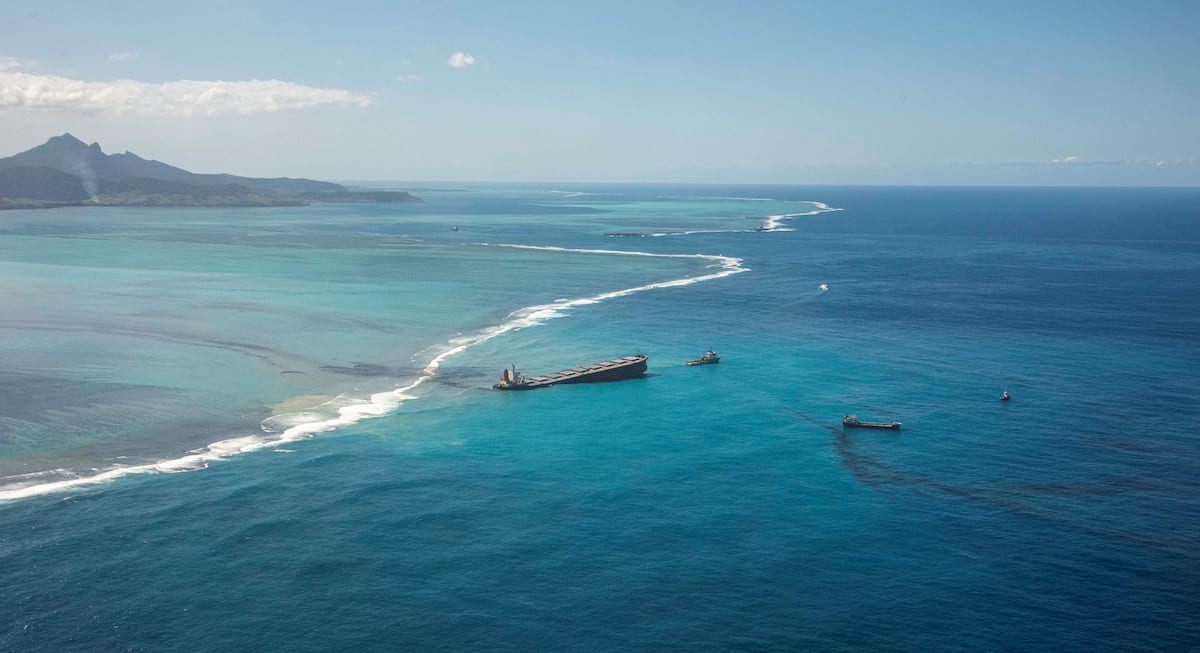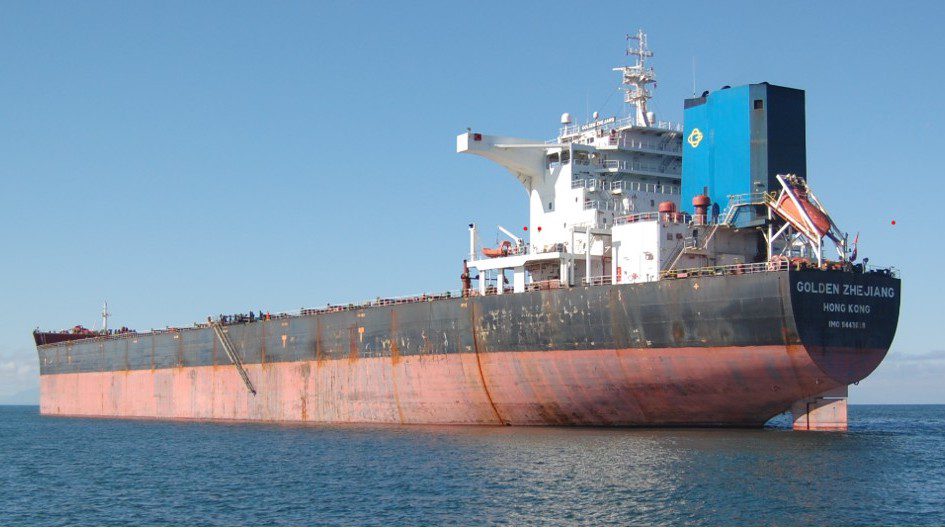Five years after the MV Wakashio ran aground on Mauritius’s south-east coast, causing the island nation’s worst maritime environmental disaster, the long-awaited Court of Investigation report has finally been made public, revealing shocking negligence and profound institutional failures.
The 300-meter-long ore carrier flying the Panamanian flag ran onto the reefs of Pointe-d’Esny, some 900 meters from shore, on July 25th, 2020, while en route to Brazil. What caused the disaster? According to the report, the crew’s preoccupation with accessing mobile internet signals took precedence over navigation safety.
“Access to mobile network communications to contact the family took precedence over his first and foremost duty to keep a safe navigational watch during his hours of duty,” the report states regarding the Chief Officer on duty at the time of the accident.
The disaster sparked public outrage, leading to multiple demonstrations.
The investigation found multiple critical failures that led to the grounding, including “the absence of a large scale chart for the region, coupled with the over reliance on an over-zoomed small scale Electronic Navigation Chart on the Electronic Chart Display Information System (ECDIS), and consumption of liquor by the master on the bridge.”
Perhaps most damning was the revelation that the Master had consumed “2 drinks of Johnnie Walker whisky which is 40% proof” at a crew member’s birthday party and “had 2 more drinks at the bridge” after returning. The vessel’s Voyage Data Recorder (VDR) captured conversations between the Master, Chief Officer and Chief Engineer that were “about telephone communication and internet access and drinking” rather than safe navigation.
The report also reveals that the Master deliberately sailed close to the Mauritius coast to obtain mobile phone signals, entering territorial waters without informing authorities. When it became clear they were dangerously close to land—just 1.5 miles from shore—the Master failed to take command as required by company procedures.
In a particularly negligent moment, the Chief Officer asked the Master to allow the Cadet Officer to skip his lookout duties to remain at the party, to which “the Master said that he did not mind.”
The disaster was compounded by institutional failures. The National Coast Guard has been severely criticized for failing to detect the bulk carrier’s dangerous trajectory despite the vessel being visible on radar. The report highlights poor coordination among various authorities, resulting in slow, sometimes contradictory decisions that delayed mitigation measures after the grounding.
After the grounding, salvors attempted to stabilize the vessel by filling a hold with seawater, but cracks developed in the hull structure, ultimately causing the ship to break into two parts and spill approximately 1,000 tons of heavy oil, devastating local marine ecosystems.
The report recommends Mauritius adopt a mandatory reporting system within a specific zone around its coastal areas and update its oil spill contingency plan, which was nearly two decades old at the time of the incident.
The report’s release follows the election of a new government eleven months ago. The previous government had refused to make the Court of Investigation’s report public, considering it too sensitive.
Captain Sunil Kumar Nandeshwar and First Mate Hitihamillage Subodha Janendra Tilakaratna previously pleaded guilty to endangering safe navigation under the Merchant Shipping Act.
The full report can be found here.
–With assistance from Vel Moonien.

 Join The Club
Join The Club










